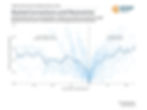Market Corrections and Recoveries
- Todd Pouliot
- May 15
- 3 min read
Special Update: Insights on U.S.-China Trade Progress
by Todd J. Pouliot, AIF
I want to share some straightforward information about the recent trade progress between the U.S. and China. While you've probably seen many news stories about trade, we want to help you understand how these events might affect the economy, markets, and your personal financial situation.
The most important thing to remember is that long-term thinking and having different types of investments (what we call diversification) has continued to work well for investors. The S&P 500 (a major market index) has almost returned to its value from the beginning of the year, and is now higher than before the April 2 tariff announcement.
Let me explain what recent news headlines mean and what we might expect going forward. Please let me know if you have any questions or concerns.
How Markets Have Responded
The new trade agreement between the U.S. and China is a significant development. This 90-day agreement reduces U.S. tariff rates on Chinese imports from 145% to 30%, while China's rates on U.S. goods drop to 10%. Along with paused tariffs involving other trading partners and a new U.K. trade deal, these changes have helped calm worries about ongoing trade conflicts.
The current administration has used tariffs more extensively than many economists expected, but this approach is similar to what happened during 2018-2019 in the first Trump administration. Back then, tariffs were also used to negotiate new trade agreements.
Financial markets usually react negatively to unexpected news and uncertainty. When the April 2 tariffs were announced, markets dropped quickly as people feared the worst. However, markets bounced back as more transparent information emerged about the actual impact and possible solutions.
This pattern shows why it's essential to look beyond daily headlines and keep market movements in perspective. Your investment portfolio and financial plan are designed for the long term, with the understanding that markets will have ups and downs along the way.
What This Means for the Economy
Despite the trade uncertainties, many economic indicators remain positive:
Employment: The unemployment rate stayed at 4.2%. The economy added 177,000 new jobs in April, which was better than the expected 138,000. This means companies are still hiring despite uncertainty.
Inflation: Price increases continue to slow toward the Federal Reserve's 2% goal, with the latest Consumer Price Index at 2.4% compared to last year. Fears about tariffs causing inflation may now be reduced.
Interest Rates: The U.S.-China agreement reduces pressure for immediate action by the Federal Reserve, but interest rates are still likely to go down overall. Markets expect two or three rate cuts this year, possibly starting in July or September.
Looking Ahead
How markets have responded to recent trade progress shows how quickly investor feelings can change. During times of negative news and market drops, it can seem like markets will never recover. However, history shows that this pattern of decline and recovery happens quite often.
Most importantly, markets often bounce back when people least expect it, as we've seen following progress in trade talks.
While uncertainty hasn't completely disappeared, recent trade developments have reduced concerns about worst-case scenarios. As always, thinking long-term is important to keep investments aligned with financial goals.

This chart shows the two dozen stock market corrections since World War II.
The average correction sees the market fall by 14.3% from peak to trough, taking 5 months.
Recoveries can occur swiftly, taking only 4 months on average. Staying invested helps investors avoid missing market rebounds.
This chart shows every S&P 500 correction since World War II. Market corrections are defined as declines beyond 10% but less than 20% from the previous all-time high.
Declines of 20% or more are considered bear markets. The market bottom is reindexed to 100, and the x-axis measures days before and after the market bottom.
Date Range: January 1950 to present
Source: Clearnomics, Standard & Poor's
What does the new trade agreement between the U.S. and China mean for my investments?
I always appreciate the trust our clients put in us, and we are humbled to work for you and your family. You can learn more about us by visiting www.mygatewaymoney.com or booking a time to chat with us there.
.png)